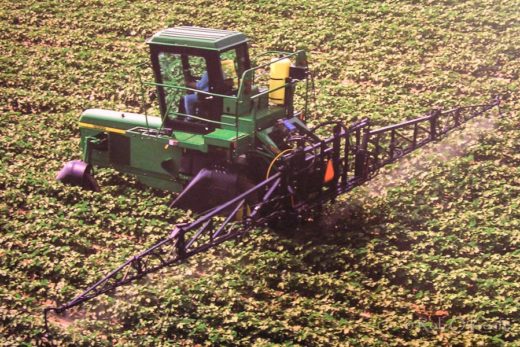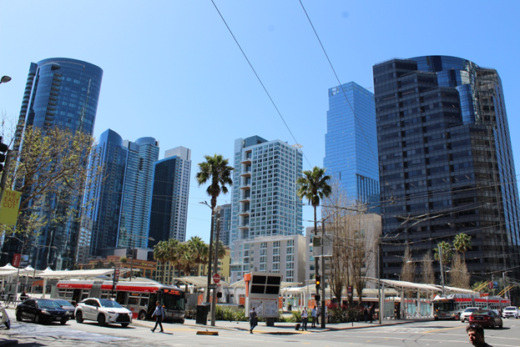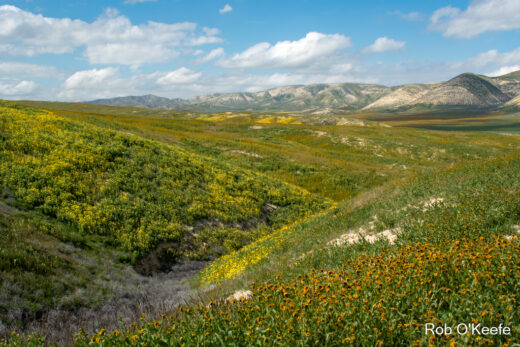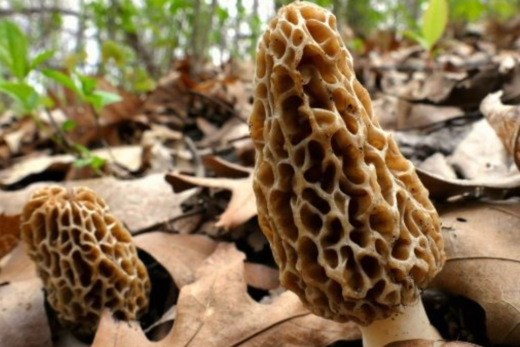Our continued celebration of California’s unequaled cultural diversity directs us back to the ethnic restaurants of Los Angeles. Here, we are proud to share the extraordinary work of one of Dr. Jing Liu’s best students: engineer and mapmaker Javier Soliz. Javi used some cutting-edge geospatial techniques from Jing’s class to organize otherwise complicated data into the construction of a series of remarkable maps. Bon appétit while you search for your favorite culinary communities or “hot spots” as Javier Soliz takes center stage with his maps that expose some of L.A.’s diversity.
You may choose to read down this page with its traditional style, but if you would rather view the same story with all the technological marvels of a Story Map, click to this link and you can skip this page: https://arcg.is/inzjD
Melting Pots and Salad Bowls of L.A.: A Culinary and Cultural Study
It’s finally time! You’ve been anticipating it. Imagine your favorite food. Really, close your eyes for a second and imagine it. Its aroma fills the air and brings back happy memories or feelings of home. It’s right there, on its way to your mouth. That first bite. It sends you back. Back to your childhood. Back to your family and friends. Back Home. In that moment you’re connected. We’re all connected. For it’s food that binds us; it’s food that nurtures us; and it’s food that unites us all.
Food is an integral part of culture, so much so, that one of the first things people do when immigrating into a new home is establish communities and restaurants to feed them. The US has long been called the Great American Melting Pot, and no other city on Earth can match the cultural diversity that Los Angeles has to offer.
Whether you’re a newly minted Angeleno, a long time resident, or just someone looking to maximize their experience when visiting this wonderful city, you don’t want to miss all the greatness LA has to offer. Large cities like this offer a world of cultural and culinary experiences; and, if you haven’t explored a city’s hot spots, it’s like you’ve never been there at all.
Ever get an invite to join friends at an Ethiopian restaurant only to realize you’ve never even had Ethiopian food before? Maybe not, but there’s certainly some great foods out there still waiting for you to try. You can learn a lot about the cultural makeup of a city by eating your way through those communities formed around food. You can become a more learned and improved traveler without even needing a passport.
“Culinary Communities” aren’t always labeled on a map in obvious ways like LA’s Koreatown might be, but with some geospatial analysis, you can get a good idea of where they are. Below, we’ll explore what came up for Los Angeles. And, for those geospatial buffs out there, you’ll find more about how these maps were generated towards the end.
Major Culinary Hot Spots Maps
The intuitive way to read the maps below is to see redder spots as having a statistically significant and higher than expected concentration of a given restaurant type than if these restaurants were evenly distributed throughout LA County – These are “Hot Spots.” The areas which are more blue are, similarly, “Cold Spots.” Dark, uncolored areas, don’t necessarily lack restaurants, they’re just areas where the concentration isn’t significantly high or low.
As you peruse these maps, you will notice that they unveil some interesting trends, but they may also encourage even more questions, especially from seasoned locals who are familiar with these places. There are multiple variables to question here, until they can become overwhelming. How does one decide how to categorize each type of ethnic food and its origins? How do we even define the boundaries of a region of the globe, such as what is considered to be in the Middle East? How do we count restaurants that may enthusiastically identify with one particular ethnic group’s cuisine, though they may offer that famous L.A. fusion mix, until it becomes a less genuine version that is Americanized, or California-ized? How might have these restaurants been forced to change as their neighborhoods evolved demographically? Some of these restaurants may have been stranded, now representing cultural enclaves of the past. We will try to address a few of these questions that may arise for each map.







Digging Deeper – Asian Restaurants
You may be thinking: “isn’t it an oversimplification to lump entire continents of people together?” You may have even seen the work of our friends at The Radical Dot Map and noticed intuitive spatial correlations between ethnicity and the culinary maps above, but also noticed these maps don’t get very granular. ‘Asian’ is pretty broad. There are a lot of distinct cultures lumped into that label. Why do cartographers keep doing that? Well, in part, it’s because even the 2010 census lumped people into 6 groups this way.
High level aggregations like this are easy to understand, but don’t paint the picture with as full a pallet as they could. Below we’ll add some detail to just one of those categories and map out hot spots of different types of Asian Restaurants in LA.






Map Wrap Up Notes from Javier
Those of you not from LA may not know of the late, beloved culinary critic Johnathan Gold. Gold was loved and welcome at any table in any neighborhood as if he were an old friend or family. He brought cultures together by introducing them to each other’s food and won a Pulitzer Prize doing it. He had a profound appreciation for the culture and history of LA.
Think of all the divisiveness you see these days. Now, imagine instead, if we were all a little more like Gold. All you have to do is grow your comfort zone a little and explore your city. Post-COVID, if you’re fortunate enough to be near Los Angeles, you could take a food tour and Eat Your Way Through LA! You could plan to visit a handful of places in a given area each month and by this time next year you’ll find yourself much more appreciative of the food and culture of your great city. There are plenty of apps that will help you do this. Use an app like Swarm to make it easy to Remember Everywhere you’ve been and want to go. Or create a blog. It’s amazing how many foodie-followers you can get. Get out there and expand your horizons. The more we’re all a bit more like Gold, the more our diversity multiplies our strength as a community.
Appendix
You can see how this evolved into a project that demonstrates the power and limitations of maps as much as it illustrates the distributions of ethnic restaurants and cultures in L.A. County. We are reminded that maps are only as reliable and trustworthy as the data used and the people who make them and that these technologies are improving by the day. If you are interested in more details about how the data, science, and technology were molded into these cartographic works of art, continue reading through the next sections.
About the Data
The restaurant’s data used was pulled from Foursquare’s Places Database – a comprehensive dataset spanning 190+ countries and 50 territories. The data set is updated daily as our world is constantly evolving. This analysis was done in December 2020.
The Foursquare Places Database has a rich set of attributes you could use to understand the world around you. This analysis only needed a few of them: the restaurant’s location, the restaurant’s categorization, and information telling us if the restaurants were part of a national chain.
Independent, locally owned and operated locations are more representative of a community than national chains like McDonald’s or Subway; so, all chain locations were removed. Certain other categories like Dessert Shops, Bakeries, and Coffee Shops were removed as they weren’t unique enough to any particular culture. The remaining thousands of locations tell a very detailed story and could fall into one of 350 different categories related to food. These locations were aggregated up using personal judgement into the major categories seen above in the first set of maps. For example Indian, Bangladeshi, Pakistani, and Sri Lankan Restaurants were combined into a single “Indian Subcontinent” Grouping. For the second set of maps diving deeper into Asian restaurants, most of the detailed categories were left as is, with little aggregation. Details on these recategorizations can be found in this gist. Once recategorized, this data can easily be fed into your favorite geoanalysis tool.
About the Geospatial Hot Spot Analysis
All of the above maps were built using ArcGIS Pro’s Optimized Hot Spot Analysis readily available in its Spatial Statistics toolbox. This tool aggregates point data, the location of restaurants of a given culinary category in this case, into the cells of a fishnet grid or hexagon polygon layer. These generated polygons are then compared to their neighbors and cells are categorized as being either statistically not significant or as being significant “hot spots,” or “cold spots.”
The categorization algorithm running underneath is the Getis-Ord Gi* statistic. In our analysis, the default fishnet cell size was chosen to be 500m by 500m and a bounding polygon capturing commercially feasible areas for restaurants was supplied. The algorithm evaluates whether a given fishnet cell can be considered as a statistically significant hotspot or cold spot by comparing restaurant distributions to theoretical random distributions generated within the supplied bounding polygon and calculating a z-score and a p-value for each cell. For statistically significant (evaluated by p-value) positive z-scores, the larger the z-score is, the more concentrated restaurants are in that area (hot spot). For statistically significant (evaluated by p-value) negative z-scores, the smaller the z-score is, the more intense the clustering of low values (cold spot).
It should be noted that not all categories had enough locations to produce reliable results. ArcGIS Pro’s Optimized Hot Spot Analysis tool requires certain threshold numbers of input locations. This is why there are far more categories of restaurant available than maps shown above.
About The Authors
Javier Soliz does data engineering and analysis in service of revenue generation as a Sales Engineer for Foursquare Labs Inc..
William (Bill) Selby is a Geographer and lover of the rich culture of California. He is the author of Rediscovering the Golden State. More here.
Jing Liu is a professor of Geography and GIS (Geographic Information Science) at Santa Monica College. She is also on the team of Rediscovering the Golden State. More here.






